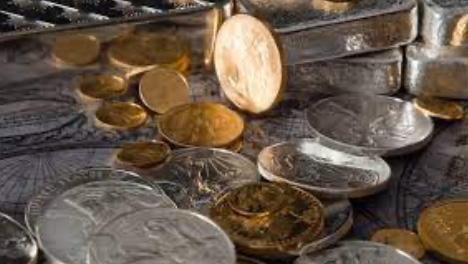The gold-silver ratio is a measure of the relative value of gold to silver. It is calculated by dividing the price of gold by the price of silver. For example, if the price of gold is $1,800 per ounce and the price of silver is $25 per ounce, the gold-silver ratio would be 72 (i.e., $1,800 ÷ $25 = 72).
The gold-silver ratio is important to investors because it can provide insights into market trends and investment opportunities. Historically, the ratio has varied widely, but over the past century, it has averaged around 50:1. This means that, on average, it would take 50 ounces of silver to buy one ounce of gold.
When the ratio is high, it may indicate that silver is undervalued compared to gold and may present an opportunity to invest in silver. When the ratio is low, it may indicate that gold is undervalued compared to silver and may present an opportunity to invest in gold.
Overall, the gold-silver ratio is a useful tool for investors who are interested in the precious metals market, as it can help them make informed decisions about when to buy and sell gold and silver.
An example is lets say gold is at an 86 to 1 ratio with silver which is what it was on 3/29/23, some people may take this information and decide to allocate more of their funds to silver with the belief it will swing back closer to 50 to 1, if and when that occurs they may sell some of their silver and turn it back into gold.
What was the gold silver ratio in the 1800’s
The gold-silver ratio in the 1800s varied widely, depending on the time period and location. During the early 1800s, the ratio was generally around 15:1 in the United States, which meant that it took 15 ounces of silver to buy one ounce of gold.
However, during the mid to late 1800s, the discovery of large silver deposits in the United States and other countries caused a significant increase in the supply of silver, which led to a decline in its value relative to gold. As a result, the gold-silver ratio began to rise, reaching as high as 30:1 or 40:1 in the United States by the end of the century.
In the 1890s, the US government passed legislation that required the purchase of a certain amount of silver by the government each month, in an effort to support the price of silver. This led to a brief decline in the gold-silver ratio, but ultimately failed to stabilize the price of silver, which continued to decline relative to gold in the early 1900s.
what was the gold silver ratio in the 1900’s
The gold-silver ratio in the 1900s also varied widely, depending on the time period and location. In the early 1900s, the ratio was generally around 30:1 in the United States, which meant that it took 30 ounces of silver to buy one ounce of gold.
During the 1930s, as a result of the Great Depression and the devaluation of the US dollar, the US government increased the price of gold and devalued the price of silver, leading to a significant increase in the gold-silver ratio. By the end of the decade, the ratio had risen to around 100:1, which meant that it took 100 ounces of silver to buy one ounce of gold.
During the mid to late 1900s, the gold-silver ratio continued to fluctuate, reaching a low of around 15:1 in the 1960s, and a high of around 80:1 in the 1990s. In recent years, the ratio has generally been in the range of 60:1 to 80:1.
What should the gold to silver ratio be?
There is no “correct” or “ideal” gold-to-silver ratio that is universally accepted, as it can vary depending on a variety of economic and market factors.
Historically, the gold-to-silver ratio has often fluctuated between 15:1 to 70:1, meaning that one ounce of gold was worth between 15 and 70 ounces of silver.
Some investors believe that the gold-to-silver ratio should be closer to its historical average of around 15:1, while others believe that a higher ratio like 50:1 is more appropriate in the current economic environment.
Today, many people believe that the silver price is being manipulated by the large bullion banks and the paper derivative markets and does not reflect the true value of the bullion. They feel that the prices are being artificially being held down. Some even believe that the governments are supporting this so as not to cause a flight away from fiat currency and into precious metals. Many banks have been fined for manipulating the precious metals markets.
